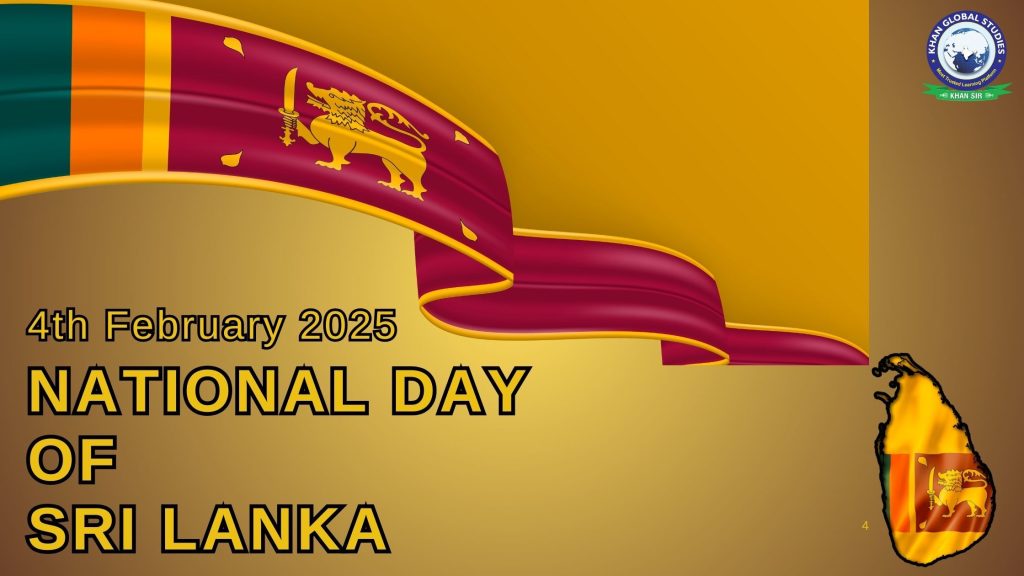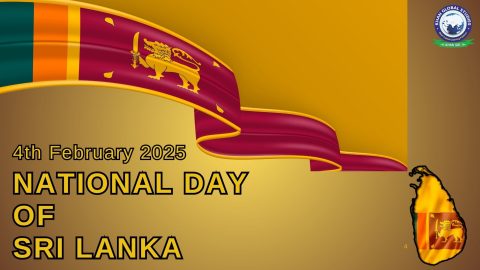Sri Lanka National and 76th Independence Day 2025 is an important milestone in the country’s history. Every year on February 4, Sri Lanka celebrates its independence from British colonial rule, which was achieved in 1948. The day is celebrated with great enthusiasm with parades, cultural performances, and patriotic events across the country. Since Sri Lanka will celebrate its 76th anniversary of independence in 2025, the celebrations reflect the country’s progress, unity, and future aspirations.
History of Sri Lanka Independence
Colonial Era and Struggle for Independence
Sri Lanka, formerly known as Ceylon, was under foreign rule for several centuries. The Portuguese arrived in 1505, followed by the Dutch in 1658, and finally, the British took control in 1796. Under British rule, Sri Lanka became an important economic hub, mainly due to its tea, coffee, and rubber plantations. However, growing nationalist sentiments and political movements led to demands for self-rule.
The Road to Independence
The struggle for independence was led by leaders such as D.S. Senanayake, Sir Ponnambalam Arunachalam and Sir Ponnambalam Ramanathan. Pressure for constitutional reforms grew in the early 20th century, resulting in the Donoughmore Constitution of 1931, which provided for universal suffrage. After decades of negotiations and political activism, Sri Lanka gained full independence on February 4, 1948, with D.S. Senanayake becoming the first prime minister of the newly independent nation.
Significance of National and Independence Day
National and Independence Day hold great significance for Sri Lanka, as it symbolizes freedom, sovereignty and national pride. It is a day to honor the sacrifices of past leaders, celebrate the country’s cultural diversity and reflects on the progress achieved over the years. The event also highlights the need for continued development, unity and prosperity in the country.
How Sri Lanka Celebrates Independence Day?
National Flag Hoisting and Official Ceremonies
The celebrations begin with the hoisting of the national flag at Galle Face Green in Colombo, followed by the President’s address. The event is attended by government officials, diplomats, military personnel, and civilians.
Military Parade and Cultural Displays
A grand military parade of Sri Lanka’s Army, Navy, Air Force, and Police showcases the country’s military might. Traditional Kandyan dancers, drummers, and musicians add cultural vibrancy to the event.
Religious Rituals and National Prayers
Religious leaders from Buddhism, Hinduism, Islam, and Christianity offer prayers and blessings for the peace and prosperity of the country.
Fireworks and Public Celebrations
As night falls, spectacular fireworks displays light up the skies in major cities like Colombo, Kandy, and Galle. Communities organize patriotic songs, dramas, and exhibitions to celebrate the occasion.
Impact of Independence on Sri Lanka
Political and Economic Progress
Since gaining independence, Sri Lanka has developed into a democratic republic. The transition to a republic in 1972 further strengthened national sovereignty. Over the years, the country has seen economic growth, infrastructure development, and improvements in education and healthcare.
Challenges and reconstruction efforts
Despite its progress, Sri Lanka has faced challenges including civil war (1983-2009) and economic difficulties. However, post-war reconciliation efforts, international partnerships, and national initiatives have helped the country rebuild and strengthen its position on the global stage.
Cultural and National Identity
The Independence Day celebrations reinforce Sri Lanka’s rich cultural heritage. The blend of Sinhalese, Tamil, Muslim and Burgher traditions highlights the country’s multi-ethnic and multi-religious diversity, fostering a sense of unity and national identity.
Benefits of Celebrating Independence Day
- Promotes National Unity – Encourages patriotism and solidarity among citizens.
- Honours National Heroes – Recognizes the sacrifices of freedom fighters.
- Showcases Cultural Heritage – Highlights Sri Lanka’s rich traditions and history.
- Boosts Tourism and Economy – Attracts local and international visitors, and supports economic growth.
- Inspires Future Generations – Educates youth about the importance of freedom and civic responsibility.
76th Independence Day Theme and Message
Each year, the Independence Day celebrations are centred around a theme that reflects the nation’s aspirations. In 2025, the theme emphasized peace, progress and prosperity, focusing on national unity and economic development. The government encouraged citizens to work together towards a brighter future while remembering the sacrifices of past generations.
Conclusion
Sri Lanka’s National and Independence Day 2025 is not just a historical commemoration but a celebration of the nation’s journey towards peace, development and unity. As Sri Lanka enters its 76th year of independence, it is committed to preserving its heritage, democratic values and progress for future generations.
Frequently Asked Questions
Q: Why is Sri Lanka’s Independence Day celebrated on February 4?
Ans: Sri Lanka’s Independence Day is celebrated on February 4 to mark the country’s independence from British rule in 1948 and the beginning of self-rule.
Q: How is Independence Day celebrated in Sri Lanka?
Ans: The celebrations include flag-hoisting ceremonies, military parades, cultural performances, interfaith religious services, and the President’s national address.
Q: What is the theme of Sri Lanka’s 76th Independence Day?
Ans: The theme of the 76th Independence Day in 2025 focused on peace, national unity, and economic progress.
Q: What is the significance of Independence Square in Colombo?
Ans: Independence Square is a historic site where Sri Lanka’s first Independence Day celebration was held in 1948. It remains a national landmark symbolizing freedom and sovereignty.





